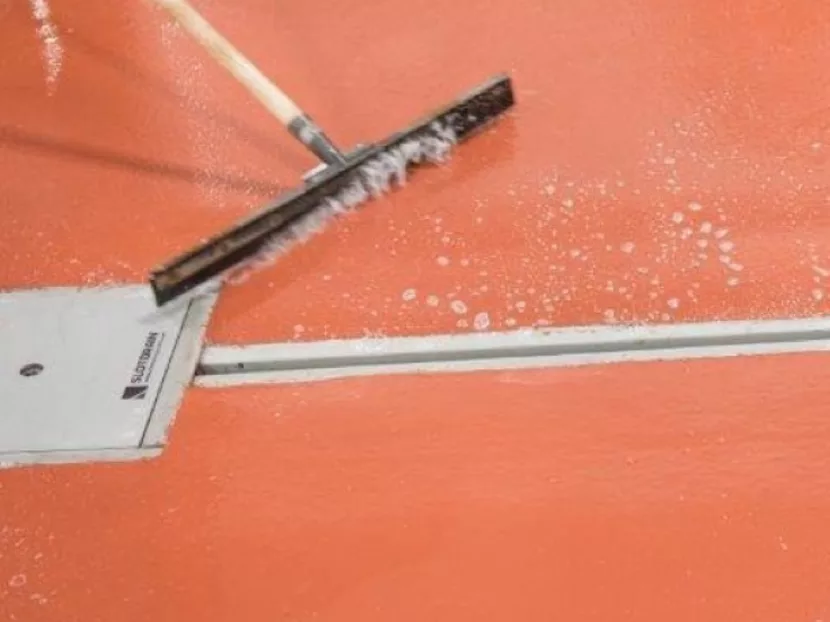Owners of food-handling facilities need to check a lot of boxes so they don’t get shut down. In addition to having the proper building construction and employee training, the drainage system must be able to prevent the possibility of food contamination.
Almost every month there’s a new recall on some food product because consumers have gotten sick or died from consuming it. Food contamination is a problem that will never go away; constant attention is needed to prevent it from occurring.
To help prevent food contamination in facilities, let’s take a look at some drainage system tips to provide the best possible chance of preventing people from becoming ill or dying from food prepared at a client’s facility.
Choose the Right Drainage System
When it comes to installing a sanitary drainage system in a facility, there are many types of drains to choose from. Some of them are shaped differently or have different drainage points for water to flow into. Some are bigger than others and some are more suited for different types of facilities. Here are the two main types of drains and how they stack up against each other:
Point drains are the most common type of drains you’ll see anywhere. Similar to the drain in your shower or your sink, they have one point sunk into the floor where all the water flows into. This point is called a gully and it connects to plumbing below the surface.
When it comes to food facilities, point drains are very ineffective and dangerous. The slopes they require around the gully can be difficult to maneuver over, leading to slips and falls.
They’re also less pleasing to the eye and require a lot of trench support and excavation to install. Because of these drawbacks, point drains are not recommended for use in a food facility.
Trench drains are a system that will collect wastewater from multiple locations throughout their length, simultaneously. This design allows them to have a higher capacity for drainage and lowers any chance of streaming or pooling at the site.
Most trench drain designs are covered with grates and do not require a lot of trench support beneath the surface. Because of this design, trench drains can more easily blend into the background, they’re easier to install and they drain wastewater more effectively for food facility buildings.
The three types of trench drains are HDPE trench drains, cast-in-place trench drains, and slot drains.
HDPE stands for high-density polyethylene and it’s a recent innovation in the drainage system industry. The sections of these types of drains are pre-engineered modular channels, which are lightweight and easy to install. They are durable and smooth, with a larger flow capacity as well. HDPE trench drains also cost less to install and have a very high chemical-resistance rating.
While this makes them ideal for industrial applications, they do still need grates to cover their open channels. This can be an issue for food facilities because grates are easy to trip on, cause problems for wheeled equipment and are much harder to clean.
Cast-in-place trench drains are the oldest and most traditional types of trench drains. Requiring reinforcing bar and wood forms to be cast, these drains require a large amount of time and effort to install. They use grates which are non-locking and are prone to disintegration over time.
The internal surfaces are rough and catch more debris. They often become blocked as a result. They trap a lot of bacteria while being very difficult to clean. They also are a hazard for employees who use wheelchairs. For these reasons, cast-in-place trench drains are not ideal for food facilities.
Slot drains, like HDPE drains, are a recent innovation. They do not require the use of dangerous and dirty grates, however. They are long, thin cracks in the floor which water can flow into and be drained away to a wastewater storage tank. Unlike the traditional type of trench drains, slot drains are easy to install and are more cost-effective than grated drains.
Made of stainless steel, slot drains are designed to make it harder for bacteria and debris to get trapped inside. This reduces odor significantly, compared to other drains. They can be easily cleaned and are very strong, despite needing little support below the surface. They are not a tripping hazard either, and the cost of maintaining them over a lifetime is very low.
Maintaining a Sanitary Drainage System
It’s not just enough to have the proper sanitary drainage system in place; you also need to consider the needs of the facility as well as a plan for cleaning the drains every so often.
Facilities should ensure they have the right water flow for the job. A higher temperature or a more powerful flow may be needed, depending on what kind of waste is produced, as well as other factors.
Install dedicated waste systems with interceptors for the mitigation of contaminants if the facility will be producing solid or grease waste. Ensure that the interceptors are the right size so no splashing or backup occurs when operating at full flow.
Ensure that the plant waste systems are completely separate from the sanitary waste systems.
A proper sanitary drainage system for a food facility is one that traps the lowest amount of debris and is the easiest to keep clean. Slot drains have both of these benefits while being less expensive, easier to look at and safer to work around.
Having an adequate water flow and proper setup will also go a long way in maintaining sanitary drainage. A little diligence in this area could save lives, as well as your reputation.





